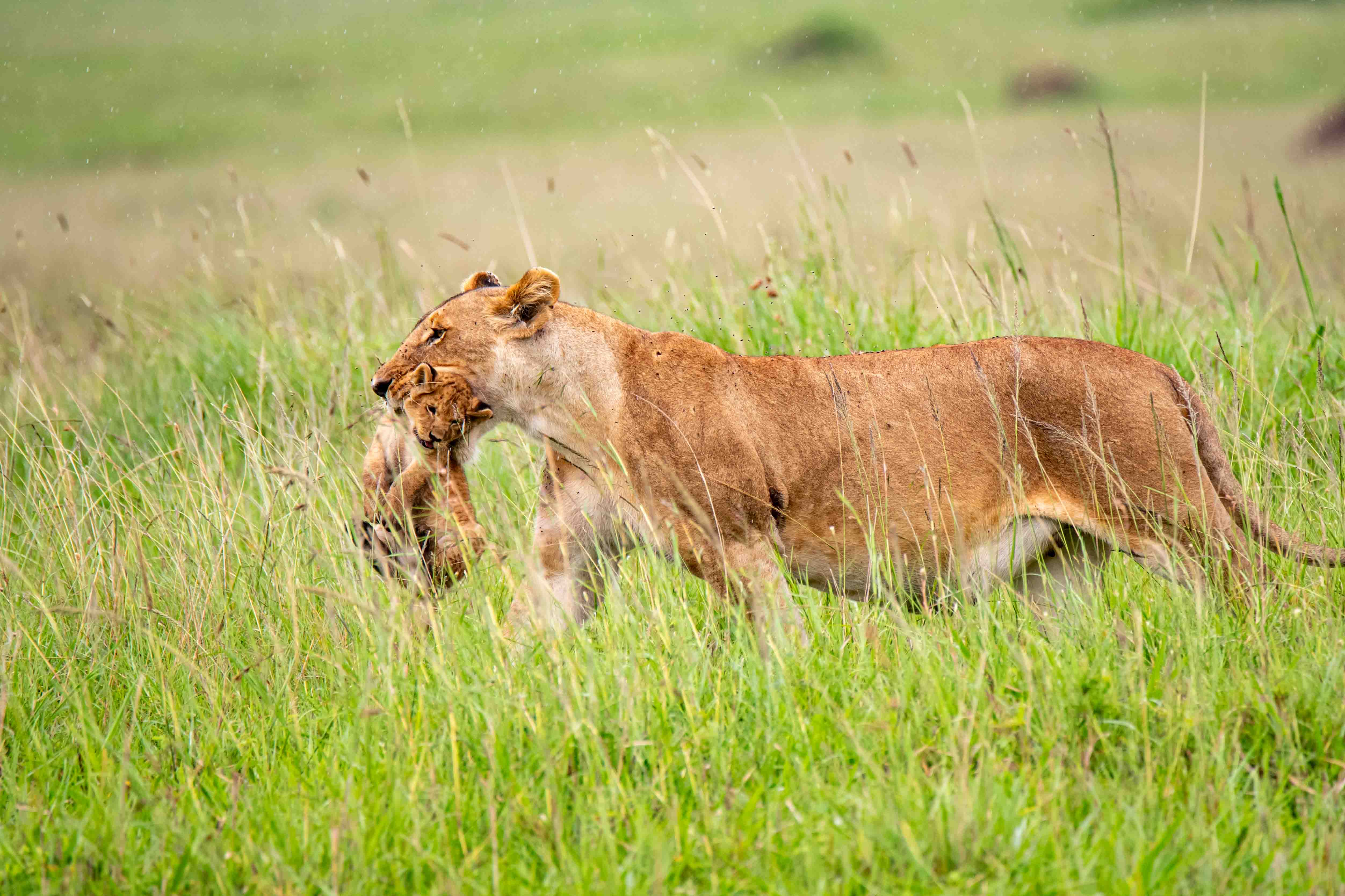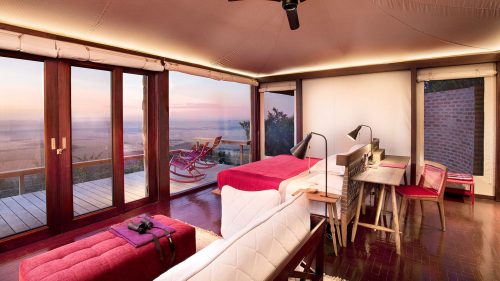
Rain has fallen across most of Kenya and many areas that had been hit badly by drought in the last few years are being brought back to life. Amboseli is turning a beautiful green and the Mara continues to glow a rich emerald colour. Rain sustains life in all shapes and sizes creating the complex and fragile ecosystem we are so fascinated by.
In the early mornings in the Mara Triangle, while it is still dark, hot-air balloons get ready to fly. The path over the Mara River is considered one of the best balloon flights in the world. Not only are you treated with a 360-degree 'window seat' view of a glorious sunrise but also game viewing of wild animals from a completely unique perspective. Floating above the wilderness is nothing less than magical no matter how many times you do it.
Oloti has again been seen on multiple occasions here in the Triangle. He was spotted very close to the 4km junction near the Serena Airstrip. Oloti (meaning 'young male' in Maa) was first seen in the Triangle in July 2020 and has been coming back for brief periods ever since. He has spent most of his life outside the Mara and must be careful as he navigates the plains by himself, typically lions do not tolerate other large cats in their territory and will injure or kill any competitors.
Wilson, an Angama Guide, found a female from the Serena Pride with three small cubs. His guests were treated to a rare sighting of the mother carrying them, gently taking hold of them from the back of the neck. This is a rare sighting to witness and to see this intimate moment between mother and cub is very special. These cubs are still learning their surroundings and are most probably only a few weeks old, less than a month. The female slowly moved the three cubs one after the other and led them to a waterbuck kill she had made earlier.
The white-browed coucal is a large bird with a white stripe above distinct deep red eyes. They are well-known for their bubbly call likened to water being poured out of a bottle. The coucal is associated with rain and local traditions say it will rain when one hears its call. These calls are important not only for communication but for territory establishment. The beautiful bubbling call integrates itself flawlessly in the rich tapestry of sounds emanating from the wild in this area. — Andrew Andrawes
Light is always a crucial ingredient in creating great imagery. Besides framing and understanding your camera, wildlife photography requires a lot of patience and, at times, an incredible amount of luck. We were actually searching for Craig, the elephant, on our way back to camp. It was around 17h00, and the beautiful evening light was transitioning into golden hues revealing a scene that captured our attention, a tower of giraffes gracefully feeding on lush green shrubs. What immediately drew my focus was the ever-stunning backdrop of Mt. Kilimanjaro. Our presence had the giraffes on high alert, all lifting their heads in unison, as if striking a pose for the photograph—a behaviour they exhibit to detect potential predators. A serendipitous moment followed when their necks crisscrossed, creating one of my favourite giraffe images that I've captured.
The nights are mostly quiet, but are they really? Out of curiosity to see and understand what happens under the cover of darkness, we set up trail cameras in areas where we suspected nocturnal activity. As days went by, I collected findings, hoping to capture glimpses of some interesting creatures. Animals can be hilarious when 'no one' is watching, from curious monkeys to warthogs scratching their butts on cameras, providing us with some entertainment. This week, we had some interesting findings: an aardvark and a civet. Both of these animals are rarely seen, as they are highly nocturnal, usually conducting their operations after dark and hiding in their dens during the day.
Aardvarks, characterised by their porcine snouts, live up to their name, meaning 'earth pig' in Afrikaans. Operating primarily at night, these mammals employ their extended noses and acute sense of smell to sniff out ants and termites, devouring them with a tongue resembling that of an anteater, coated in sticky saliva. While ants and termites constitute the majority of their diet, aardvarks occasionally consume beetle larvae. Utilising their lengthy and robust claws, these creatures open termite mounds and create subterranean burrows for sleeping and nurturing their offspring.
Civets are long-bodied, short-legged carnivores found in Africa, southern Europe and Asia. They have a thick-furred tail, small ears and a pointed snout. The colour of their fur varies among species but is often buff or grayish with black spots or stripes, making them easily identifiable. Despite their cat-like appearance, African Civets are not felines; they are more closely related to small carnivores like weasels and mongooses. Civets are typically solitary and inhabit tree hollows, rocks or burrows, venturing out to search for food at night. Even though African Civets are carnivores, their diet is diverse, including both animal and plant matter. They consume small animals like frogs, rodents, lizards and snakes, along with berries, fallen fruit and insects which are abundant during the rains.
A fascinating weather phenomenon left us mesmerised as the skies transformed into a natural display of light and showers. A sunshower is a meteorological phenomenon in which rain falls while the sun is shining. This unique occurrence happens when there are rain clouds in one part of the sky, allowing rain to fall while the sun is still visible in another part of the sky. This one happened as the sun was setting, adding to the picturesque and surreal nature of the event. — Sammy Njoroge
Filed under: This Week at Angama
Subscribe for Weekly Stories
Comments (0):

Tented Suites